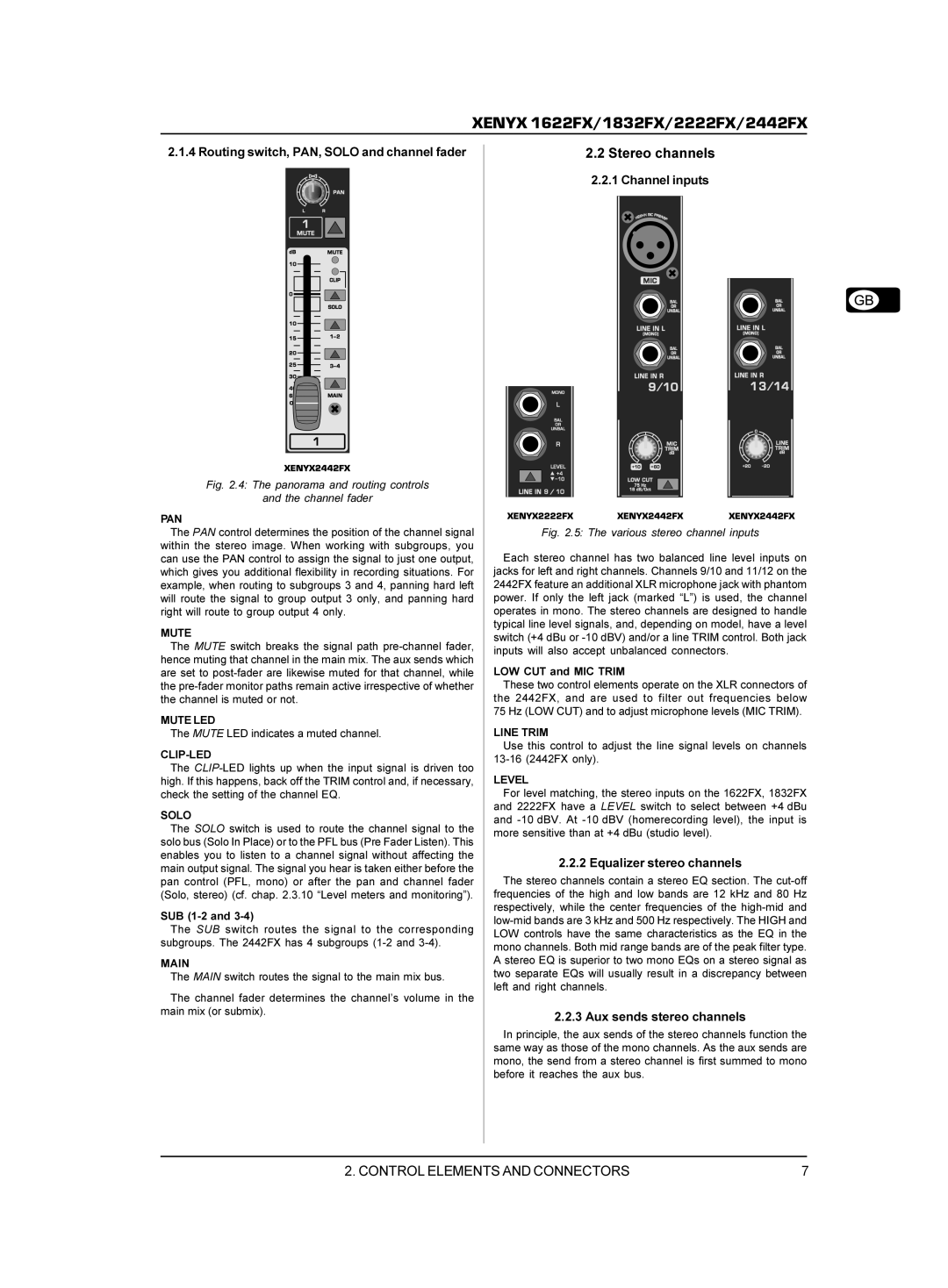
XENYX 1622FX/1832FX/2222FX/2442FX
2.1.4 Routing switch, PAN, SOLO and channel fader
Fig. 2.4: The panorama and routing controls
and the channel fader
PAN
The PAN control determines the position of the channel signal within the stereo image. When working with subgroups, you can use the PAN control to assign the signal to just one output, which gives you additional flexibility in recording situations. For example, when routing to subgroups 3 and 4, panning hard left will route the signal to group output 3 only, and panning hard right will route to group output 4 only.
MUTE
The MUTE switch breaks the signal path
MUTE LED
The MUTE LED indicates a muted channel.
CLIP-LED
The
SOLO
The SOLO switch is used to route the channel signal to the solo bus (Solo In Place) or to the PFL bus (Pre Fader Listen). This enables you to listen to a channel signal without affecting the main output signal. The signal you hear is taken either before the pan control (PFL, mono) or after the pan and channel fader (Solo, stereo) (cf. chap. 2.3.10 “Level meters and monitoring”).
SUB
The SUB switch routes the signal to the corresponding subgroups. The 2442FX has 4 subgroups
MAIN
The MAIN switch routes the signal to the main mix bus.
The channel fader determines the channel’s volume in the main mix (or submix).
2.2Stereo channels
2.2.1Channel inputs
Fig. 2.5: The various stereo channel inputs
Each stereo channel has two balanced line level inputs on jacks for left and right channels. Channels 9/10 and 11/12 on the 2442FX feature an additional XLR microphone jack with phantom power. If only the left jack (marked “L”) is used, the channel operates in mono. The stereo channels are designed to handle typical line level signals, and, depending on model, have a level switch (+4 dBu or
LOW CUT and MIC TRIM
These two control elements operate on the XLR connectors of the 2442FX, and are used to filter out frequencies below 75 Hz (LOW CUT) and to adjust microphone levels (MIC TRIM).
LINE TRIM
Use this control to adjust the line signal levels on channels
LEVEL
For level matching, the stereo inputs on the 1622FX, 1832FX and 2222FX have a LEVEL switch to select between +4 dBu and
2.2.2 Equalizer stereo channels
The stereo channels contain a stereo EQ section. The
2.2.3 Aux sends stereo channels
In principle, the aux sends of the stereo channels function the same way as those of the mono channels. As the aux sends are mono, the send from a stereo channel is first summed to mono before it reaches the aux bus.
2. CONTROL ELEMENTS AND CONNECTORS | 7 |
